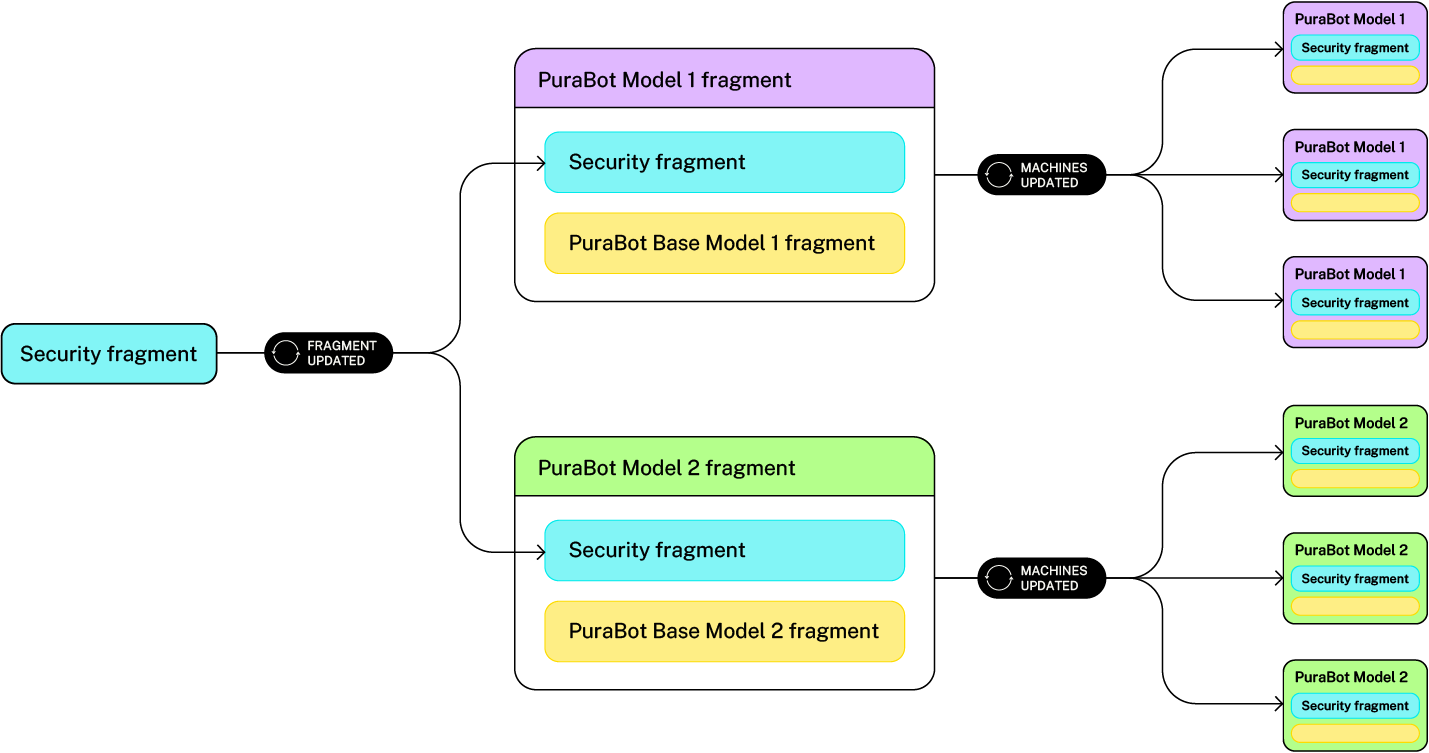Introduction: Why nested fragments matter
Managing fleets of thousands of machines requires a scalable approach. Without a structured way to handle machine configurations, updates become chaotic, version control gets messy, and keeping track of changes across machines becomes overwhelming.
That’s why we built nested fragments.
What are nested fragments?
To understand Nested Fragments, let’s start with a quick refresher on fragments.
Fragments are reusable pieces of configuration that simplify fleet management. They allow teams to implement seamless updates, simplify version control, and track changes efficiently. Rather than maintaining separate configurations for each machine, teams can create a fragment once and reuse it across their fleet.

Nested fragments take this further by allowing fragments to reference other fragments, making complex machine architectures easier to manage. With this approach, teams can modularize configurations into logical building blocks while maintaining a streamlined parent structure.
Why this is a game-changer
Nested Fragments unlock several benefits that make managing complex machine fleets more efficient:
1. Modular, reusable, and scalable
- Build once, reuse everywhere—ideal for companies managing different machine models.
- Create a fragment that references other fragments. This approach allows you to swap out sub-fragments whenever you need, promoting development agility.
- Gain a clear understanding of your machine by viewing the complete configuration of each machine, including all fragments and sub-fragments.
- Users can overwrite attributes within a sub-fragment for customization, ensuring flexibility without losing modularity.
2. Seamless updates across fleets
- Modify a single sub-fragment, and the update propagates across all machines that reference it, just as with standard fragments.
- The key advantage of Nested Fragments is that updates to deeply embedded components are automatically reflected in all parent fragments, streamlining configuration management.
- No need for manual reconfigurations—just update once and deploy effortlessly across complex, layered configurations.
3. Better organization for complex machines

Imagine an air-purifying robot–let’s call it PuraBot–as an example. PuraBot drives around your office or home, monitoring and cleaning the air. Equipped with cameras, it can navigate safely and avoid collisions with people.
At the PuraBot office headquarters one team manages a security fragment that handles cameras, machine learning, and vision services, while another team develops the motor and base fragments, ensuring clear separation of responsibilities. Each PuraBot model has its own distinct motor and base fragment—one for PuraBot V1 and another for PuraBot V2—tailored to their respective hardware. These unique fragments are then integrated into separate parent fragments, one for each PuraBot model, ensuring that updates to individual components remain modular and independent.
When the security fragment is improved, both PuraBot models automatically inherit the changes, while motor and base updates remain isolated to their respective versions. At scale, PuraBot only needs to deploy one of the parent fragments, enabling effortless management of 1,000+ robots while maintaining a structured and modular approach.



